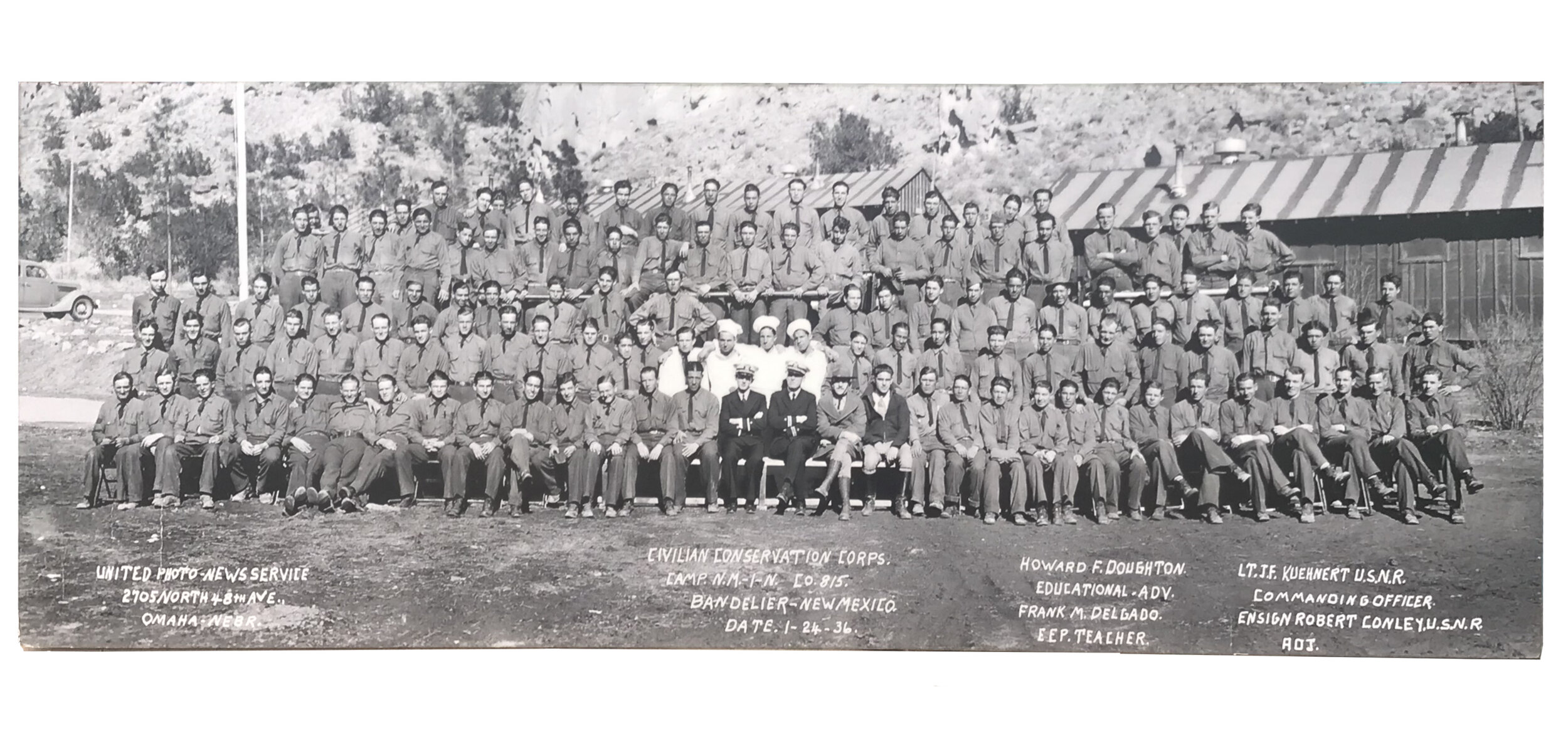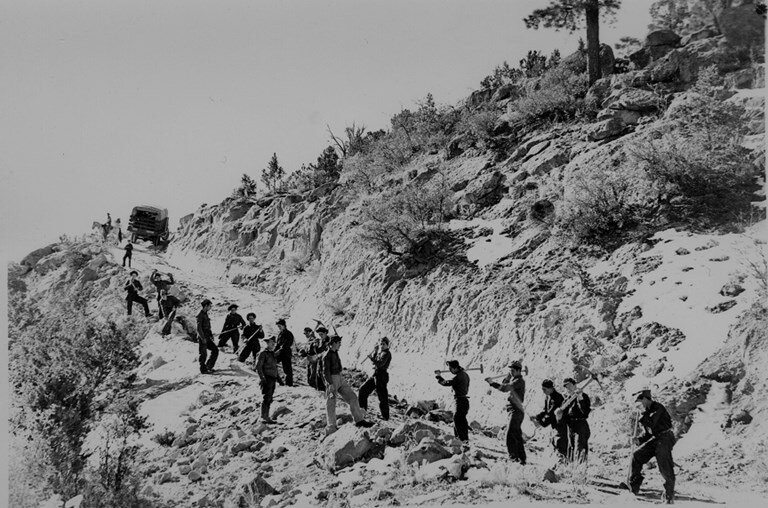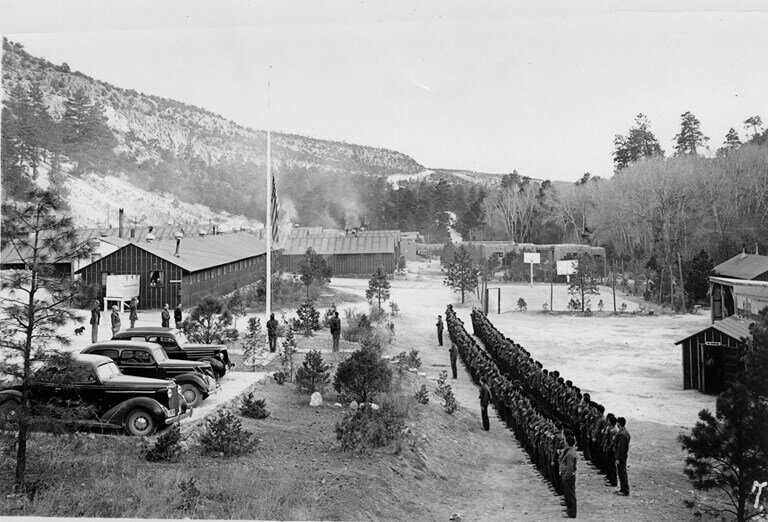
What’s the Deal With the New Deal?
1933-1943
The New Deal was a national effort undertaken, in 1933, by President Franklin D. Roosevelt’s administration to address the severe economic effects of the Great Depression. The New Deal created myriad national programs, agencies, and federal legislation that focused upon relief, recovery, and reform for Americans.
The Four Main Art Projects Were:
Public Works of Art - began 1933
Treasury Section of Painting and Sculpture - began 1934
Treasury Relief Art Project - began 1935
Works Progress Administration’s Federal Art Project - began 1935
Visit other Websites of Organizational Partners
The National New Deal Preservation Association (NNDPA), This is our National website and is based in Santa Fe, New Mexico, the NNDPA is the longest standing group working to preserve the legacy of the New Deal, especially in the Southwest. Kathy Flynn is founder and Executive Director; Harvey Smith is President of the NNDPA
Explore Our Friends at LivingNewDeal.org, based at the University of California, Berkeley. This website has a lot of information on the New Deal
The Frances Perkins Center which honors the legacy of Frances Perkins by sharing her commitment to the principle that government should provide all its people with the best possible life, and by preserving the place that shaped her character.
The Roosevelt House in New York. The Roosevelt House, an integral part of Hunter College since 1943, reopened in 2010 as a public policy institute honoring the distinguished legacy of Franklin and Eleanor Roosevelt. Its mission is three-fold: to educate students in public policy and human rights, to support faculty research, and to foster creative dialogue.
The Historical Society of New Mexico, Their mission is to increase and disseminate knowledge of New Mexico and the Southwest Borderlands history through research, publications, and educational outreach, as well as to encourage the preservation of historic objects and property.
The Roosevelt Presidential Library in Hyde Park, NY
Civilian Conservation Corps Legacy "Passing the Legacy to Future Generations"
Some video programs you might be interested in.
The Frances Perkins Center held a Virtual Garden Party on Sunday August 15, 2021
The New Deal Then and Now: What is the Role of Government in Response to Great Crises? This event took place at the Roosevelt House on October 29, 2021
Kathryn Flynn,
Executive Director of NNDPA, explains how New Deal programs developed employment, policy, laws, and enduring positive change in areas as diverse as economic stimulus, financial reform, relief and welfare, public works and infrastructure, arts and culture, and environmental conservation.
The legacy of the New Deal continues to be an inspiration and model for the essential partnership between federal, state, and local governments, as well as the American people.
New Deal Art & Architecture in New Mexico, Created by 167 Artists

NEW MEXICO
By 1935 over half of New Mexico’s population of approximately 425,000 had a job with a New Deal program, such as the Works Progress Administration (WPA), Civil Works Administration (CWA), Public Works Administration (PWA), Civilian Conservation Corps (CCC), National Youth Administration (NYA), and the Rural Electric Administration (REA), created to bring electricity to our rural areas.
In the northeastern and east-central areas of New Mexico, 72.8% of the populace was involved with a New Deal work program. This was the part of our state most affected by the Dust Bowl, where the soil became unfit to farm and families had to be moved out to new Resettlement Areas across the state and nation.

The Civilian Conservation Corps
worked on many projects in New Mexico
This is a picture of the group at Bandelier National Monument
Before 1933, the only way in and out of Frijoles Canyon was a mile and a half long switchback trail, which we know today as the Frey Trail. When the Civilian Conservation Corps (CCC) arrived that year, they built a three mile long road down as their first project. Over the next eight years, the CCC would build thirty-one Pueblo Revival-style structures for the Bandelier National Monument. If you have ever driven into Bandelier, you have these intrepid young men to thank. They were mostly between the ages of 17 and 26, earned $1 a day, and were required to send all but $5 home to their families each month. What are you building today that will last almost 100 years?
Bandelier Camp 1938
Media on this page
“The Last Frontier” by Russell Hunter, located at De Baca County Courthouse, Ft. Sumner, NM
“Conchas Dam Construction” by Odon Hullenkramer, located at Conchas Dam Visitor Center, Conchas, NM
“Church in the Rio Grande Valley” by Paul Lantz, located at McKinley County Courthouse, Gallup, NM






